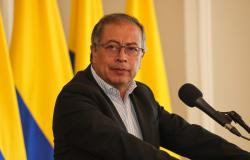This month we celebrate second anniversary of creation from school Secondary Located in a Rural Context (ESeSiR) and at the end of the year the first five students will graduate with this format. Within the Neuquén educational system, the ESeSIR aims to bring the middle level closer to dispersed rural communitiesto avoid the uprooting of the students, who previously had to move to nearby urban areas.
Lorena Moreno today is a member of the work team of the general directorate of Rural Education of the Provincial Council of Education (CPE) but until recently she was the vice principal of the school CPEM N° 98 located in the Huncal – Cajón Chico area. It has 25 years of service.
This institution has a peculiarity. When Lorena Moreno took office she presented a project so that the school can move with its students who make the summer. Therefore, this school is a nomadic school, That is, it offers classes in trailers and accompanies its students while they travel. «It is beautiful to see how the students arrive at school«, he said, «first two arrive, then two more and so on as they move, that are arriving from the trappings “The kids are joining.”
“The students They walked for an hour, an hour and a half when they didn’t have transportation,” Moreno explained, “but although pIt seems far away, it is close for the distances that are managed there«. And he remembers an anecdote that happened to him when he was on the management team of this institution.
In 2023 at the beginning of the school year, one of the students called her asidetold him that he had an acquaintance, from his Mapuche community, who went to Loncopue, the closest town to be able to go to school. But, she wanted to be with her family. Right there, Lorena Moreno told her what papers she should present now.l month I was already studying with them, close to his family. «For this student, having the school close to her allows her not having to go to Loncopue, nor spend money on rent, nor have to be alone to go to school in a town far from their community,” Moreno said and emphasized the importance of this modality, which brings education to communities. «What would you do with a 13-year-old son if he had to be alone in a town far from the community so that he can go to high school?”, he asked himself.
«This is a real and concrete response from a present State because from the day one the aim is to provide and expand the rights of adolescents in the communities«Moreno explained, «it is a secondary locatedin context so that at 18 can decide, For example, being a child but with this knowledge or even studying a degree. What these schools generate is the right to choose. Promotes equality and curricular justice. The State present in rural areas serves this specific population with its peculiarities, limitations and possibilities«.
What schools designed for those far from cities are and how they work:
The province today It has six ESeSiR: four annexes of CPEM 98 located in the development commissions of Los Catutos, Octavio Pico and Aguada San Roque, and in the Huncal – Cajón Chico area; and two annexes to CPEM 100, in the development commissions of Santo Tomás and Chorriaca.
Currently, The total enrollment is 197 studentsand the Los Catutos annex is the one with the highest enrollment, with 50 students. The teaching period of these schools is March-December, and they are characterized by being multiyear, that is, they can integrate students from several different years in the same classroom space, when enrollment allows it. He Classes are taught by areas that involve subjects, and students attend from Monday to Thursday, from 9 a.m. to 4 p.m.
Most of them operate in shared buildings, with the exception of the annex in the Huncal – Cajón Chico area which, being a nomadic school, offers classes in trailers. It is a condition for the creation of the ESeSiR, the existence of a primary school on the site. Another of its characteristics is the imprint of what is situated, since activities are proposed that are linked to the context.
Lorena Moreno assured that During these two years enrollment increased. He maintained that “with this possibility that is offered, we are ensuring the right to access to education, a right that is also recognized by the community.”
He also commented thatBefore, children dropped out of school due to uprooting that caused them to have to travel to cities or live in shelters, in the nearest towns, to attend secondary school.
“The fact of having taken secondary school to places where it was impossible for students to access is an achievement; sustaining it and increasing enrollment means that the work is bearing fruit even though there are issues to continue reviewing,” Moreno stressed. She put in value the commitment of teachers, who spend long days with the group of students. “There were many families who returned to rural communities because their children are going to have secondary school there.”, he assured. He added that the development commissions “collaborate a lot” with the development of the activities of these schools.
The ESeSiRs were created under resolution No. 1168, motivated by the presentations made by representatives of various communities that are distant from urban centers in the interior of the province. At the same time, complies with the provisions of organic law No. 2945 -of Provincial Education- which in its article 44 establishes the mandatory nature of secondary education for those who have completed primary level.
This year, these secondary schools will have the first five graduates coming from the Aguada San Roque annex, who are currently studying the second multi-year cycle.
Moreno praised the work begun in the area of Rural Education together with the provincial directorate of Secondary Education of the CPE, in the task of addressing the demands of the middle level in rural areas. Finally, he explained that, currently, the area is carrying out review tasks on this educational format, in order to know the viability of creating new ESeSiR.
«Being a rural teacher changes your mind»says Moreno, “you are not the teacher who goes to the classroom and keeps a schedule, there is a link with the community. We learn more than the kids learn, It’s a constant back and forth.





